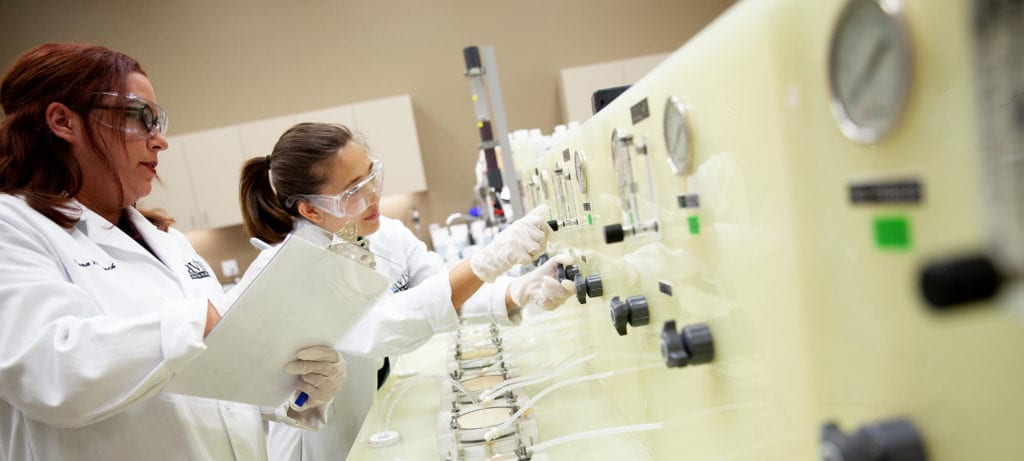Specialty Chemicals: The Key to Optimal Municipal Water Treatment

Municipal water treatment facilities are at the forefront of adopting innovative solutions to ensure the purity of our most precious resource—water.
Key to these advancements are sustainable membrane cleaning chemicals that conserve water and energy, reduce waste output, and boost the efficiency and reliability of membrane systems.
As we dive into the concept of optimizing membrane systems, we will also detail the advantages of specialty chemistries over commodity chemicals and the long-term operational benefits these practices deliver.
Community-Focused Water Treatment for Sustaining Urban Health
Municipal water supply facilities are critical in transforming raw water into potable standards that communities rely on for everyday use. However, diverse contaminant profiles require specialized water treatment techniques, increasing maintenance, and demanding rigorous monitoring. For example, surface water typically carries organic materials, silt, and pollutants, whereas groundwater is often characterized by dissolved minerals and organics.
Beyond meeting EPA’s stringent drinking water standards, modern municipal water treatment processes are steering towards advanced membrane technologies for enhancing the long-term sustainability of water resources. Municipal water treatment plants are reducing their ecological footprint, optimizing resource use, and ensuring communities receive clean, safe, and high-quality water by adopting forward-thinking practices.
Understanding the stages of municipal water treatment clarifies how these technologies tackle water quality challenges.
Stages of Municipal Water Treatment
Municipal water treatment typically involves several key stages, each designed to progressively remove impurities and ensure the safety of the water.
- Screening: Screens and grit chambers effectively prevent large debris (e.g. leaves, branches, trash) and abrasive materials (sand, gravel, glass or metal fragments) from causing clogs, wear, and damage to pumps, valves, and membranes.
- Coagulation and Flocculation: Coagulant chemicals, such as the RoQuestTM series, are added to the water to neutralize the charges on colloidal particles, causing impurities to clump together into flocs that can be removed in subsequent stages.
- Sedimentation and Clarification: By allowing flocs to settle out, the bulk of suspended solids and particulate matter are removed, significantly improving the water’s clarity and quality. This clearer and more visually appealing water is also less likely to harbor pathogens and pollutants.
- Filtration: In municipal water treatment, multimedia filtration or cartridge filters are commonly used to remove larger particles. Many systems also use one or more membrane separation processes–microfiltration (MF), ultrafiltration (UF), nanofiltration (NF), or reverse osmosis (RO)–to further purify the water.
- Disinfection: After filtration, disinfectants are added to the water to kill any remaining microbial contaminants. Chlorination is commonly used, though other methods like UV treatment are also utilized, especially in systems focusing on sustainability.
Each of these stages plays a vital role in ensuring the final water quality meets regulatory standards and is safe for public use.
Why Use Reverse Osmosis Systems for Municipal Water Treatment?
As freshwater resources become increasingly scarce, municipalities turn to alternative water sources such as brackish water, seawater, and recycled wastewater.
Although these sources are challenging to eliminate through conventional filtration methods, reverse osmosis is an effective solution for removing a wide range of contaminants, including:
- Salts and minerals: RO can remove common salts responsible for water hardness, as well as other inorganic compounds.
- Microorganisms: Viruses and bacteria are filtered out by the fine pores of the RO membrane.
- Chemicals: Pesticides, herbicides, and other harmful chemicals are reduced, especially in areas affected by agricultural runoff or industrial pollution.
- Heavy metals: Lead, arsenic, mercury, and other toxic metals are removed
The Benefits of Using RO Systems for Municipal Water Treatment
- Improved Water Quality: When integrated with other water treatment systems, RO systems can effectively remove the majority of dissolved salts (ions), suspended solids, organic compounds, microorganisms, and harmful pathogens
- Cost Efficiency: Although the initial setup cost can be significant, the long-term savings in maintenance and water purity make RO systems economically viable for municipalities.
- Flexibility and Scalability: RO systems can be designed and configured to handle different volumes of water treatment, accommodating the needs of small communities up to large cities.
- Sustainable Water Management: RO systems provide a reliable means of recycling municipal water to meet the demand for clean water to municipalities without overexploiting local water resources.
RO can remove a wide range of difficult contaminants, adapt to various water sources, and integrate with other treatment processes to produce safe, clean, and sustainable water supplies for communities worldwide.
How Proper Membrane Treatment Solutions Can Optimize Membrane Performance
Implementing RO technology in municipal water treatment is an investment, both in initial setup and ongoing operational costs. However, with proper system optimization, these costs can be managed effectively by reducing energy usage, extending equipment lifespans, and decreasing downtime.
Optimizing membrane system performance involves:
- Regular maintenance: Routine checks and maintenance of the entire RO system— including pumps, seals, and pressure vessels—are essential to prevent unnecessary downtime and ensure that the system operates within optimal parameters.
- System Monitoring and Data Analysis: Implementing advanced monitoring tools like the AvistaTM Black Box and real-time data analysis like NormRO data normalization can help detect efficiency drops and potential issues before they lead to major problems.
- Frequent cleaning and use of specialty treatment chemicals: Using high-quality cleaning chemicals tailored to the specific type of membrane fouling can significantly extend membrane life. Explore our guide on specialty vs. commodity cleaning chemicals for a deeper understanding of the differences between the two.
Among these three strategies, specialty treatment chemicals have the most significant impact on cost-effectiveness. In the next section, you’ll learn how.
Specialty Municipal Water Treatment Chemicals

At AvistaTM, we innovated specialty chemistries to address specific challenges such as scaling, fouling, and microbial growth, which are common in municipal water systems.
Specialty chemistries are the most effective solution for maintaining the efficiency of membrane systems and extending their operational lifespan, thus reducing the frequency of membrane replacement.
The following membrane cleaning and treatment chemicals are designed to reduce energy and water usage during the cleaning process and minimize waste:
- Membrane cleaning chemicals like RoCleanTM for RO systems and AvistaClean for MF and UF systems
- Pre-treatment chemicals like VitecTM scale inhibitors, Kuriverter AntiChlor chlorine scavengers, RoQuestTM coagulants, and Phoenix re-sizing agents all contribute to protecting the integrity of the membranes.
Download the brochure to view the full line of Avista membrane chemicals.
Case Studies: Success Stories in Municipal Water Treatment Plants
Several case studies demonstrate the effectiveness of using specialty chemistries for membrane systems.
For instance, a treatment facility in Florida reported an estimated annual savings of $1,200, due to the reduction of cleaning frequency (down from 3-4 times per year) because of stabilized fouling rates.

Although the customer also experienced an approximate additional cost of $3,000 per year due to upgrading the antiscalant formulation from the previous antiscalant to Vitec 1500, their overall operating and maintenance expenses have been significantly reduced by switching to specialty chemistry.
To learn more, read our full case study.
Another municipal drinking water plant in Ohio saved approximately $60,000 by recovering the membrane system performance after cleaning with RoClean P192 and RoClean P903. Stabilized system operation was also achieved due to the addition of the Vitec 5100 antiscalant.

To learn more, read our full case study.
Ready to Enhance Your Water Treatment System?
Whether you’re looking to upgrade your existing systems or seeking guidance on customized solutions in water treatment applications, our experts are here to help you every step of the way.
Visit our municipal water treatment solutions page to discover how our innovative products and services can help you meet your sustainability goals.



